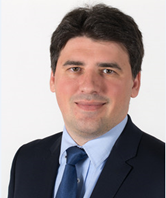Mar 2023

Zeolites established themselves in the last 70 years as a very important class of catalysts for various petrochemical and chemical transformations [1,2]. Out of around 240 zeolite structures known today only 10 – 15 found major application in industry. The accessible microporous structure with molecular pore dimensions and the possibility to tune its geometry, connectivity, and chemical composition is what attracted the interest for the application of zeolites as catalysts for increasing selectivity to target molecules or process efficiencies in large chemical processes. Driven by the industrial relevance of zeolites and their applications, a large effort was dedicated in the last decades in developing new synthesis routes for zeolites involving new concepts for direct synthesis or post synthetic approaches [3,4,5]. At molecular level, a great interest was given to the development of synthesis strategies allowing the control and distribution of active sites as well their accessibility in zeolite catalysts. Transfer of these synthetic approaches into industrial environment still remains a challenge as well harvesting the full potential materials in a future circular chemical industry [6]. The chemical industry environment is currently undergoing a major change, driven by the need to provide processes with lower carbon footprint as well a change in the primary raw materials feedstocks.
In this contribution, several examples on how zeolites catalysis could contribute to a more sustainable chemical industry would be discussed, as well how implementation of new zeolite synthesis concepts could help to enable new opportunities for chemical transformations.
References
Dr. Andrei Parvulescu graduated chemistry at the University of Bucharest and received his Master degree in Catalysis and Catalytic Processes at the same university in 2005. After defending the PhD in KU Leuven under the supervision of Profs. Pierre Jacobs and Dirk De Vos, he has been postdoctoral fellow at Utrecht University with Prof. Bert Weckhuysen. In 2011 he joined the BASF SE, Ludwigshafen in the global Process Research & Chemical Engineering department working on zeolite research catalysis. Within BASF, Dr Parvulescu worked on numerous R&D projects focused on development and application of zeolites as process chemical catalysts from new concept evaluations to scale-up and implementation in commercial processes. In 2020 he joined the BASF Monomers Division as Global Technology Manager.
From 2018 until 2020 he was responsibly managing the BASF research network INCOE (International Network of Centers of Excellence with academic partners from Japan, China, Belgium, Germany)
Dr. Parvulescu co-authored more than 50 publications in peer-reviewed scientific journals and is co-inventor of 130 patent and patent applications. Since 2019 he serves as an elected member of the Advisory Board of the German Zeolite Association of Dechema.